Panasonic Lumix DMC-TZ10 / ZS7
-
-
Written by Gordon Laing
Quality
Panasonic Lumix DMC-TZ10 / ZS7 vs Sony Cyber-shot DSC-HX5 Real-life resolution (default auto settings)
Panasonic Lumix DMC-TZ10 / ZS7 results : Real-life resolution / Sharpness wide-angle / Sharpness telephoto / High ISO Noise
Panasonic Lumix DMC-TZ10 / ZS7 results : Real-life resolution / Sharpness wide-angle / Sharpness telephoto / High ISO Noise
|
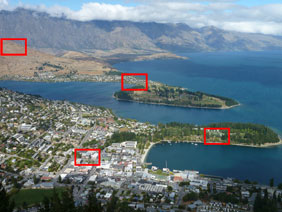 |
To compare real-life performance we shot the same scene with the Panasonic Lumix DMC-TZ10 / ZS7 and Sony Cyber-shot DSC-HX5 within a few moments of each other using their best quality JPEG settings and lowest sensitivities. The lenses on each camera were adjusted to deliver the same field-of-view; the Sony crops are larger due to its lower resolution. Each camera was set to Program mode without intervention to see how they performed with default settings. See our sharpness pages for results at all apertures. |
The image above was taken with the Panasonic Lumix DMC-TZ10 / ZS7 at 80 ISO with an exposure of 1/500 and the lens set to 6mm f5; the original file measured 4.14MB. As stated above, we allowed each camera to automatically select its own exposure in Program mode, in order to compare how they performed under default settings.
The TZ10 / ZS7 has seven aperture settings at its disposal, and went for a relatively small value of f5 here. The Sony only has two aperture settings available at any focal length, and went for the smaller of the two here, selecting f9 at 1/320 rather than f4 at 1/1250 or 1/1600.
Normally this would be cause for concern as smaller apertures on compacts often result in diffraction, and that’s certainly the case for the Panasonic here. We tested both cameras at each of their aperture settings and confirmed the Panasonic delivered crisper overall results at its largest apertures. Strangely though that wasn’t the case with our Sony HX5 sample, which defied traditional wisdom by delivering preferable results at the smaller of its two apertures. Of course had the Sony offered any intermediate aperture values, we may have seen its image quality peak at around the same point as the Panasonic (as we’d have expected), but with only two at its disposal, we have to work with what we’ve got. So below you’ll see the Panasonic slightly under-performing and the Sony working at the better of its two options. You can find out more in our Sharpness results pages, but in the meantime we’re sticking with the default automatic settings here as that’s how most of the owners of these cameras will use them.
The crops below are taken from the areas marked with the red squares and presented here at 100%. With cloud obscuring the mountain ridge, our first crops come from a lower area. There’s not a great deal of real-life detail in these hills, and across areas of tonal similarities, both cameras tend to suffer from some smearing. That said, the Panasonic has held onto the detail better than the Sony here, but this is more down to image processing than having an extra couple of Megapixels.
Moving onto the other crops, the biggest difference remains image processing rather than actual sensor resolution. The Panasonic has gone for a colder but slightly punchier style than the Sony, but in terms of actual real-life detail recorded, there’s very little in it. Pixel-peepers may notice a very slight benefit to the Panasonic in the finest building and foliage details, with the Sony again suffering from a little too much smearing, but we’d ultimately not base a decision on the minor differences seen on this page.
This is only the first of our four results pages though, and in the others you’ll see the benefit of selecting your own aperture rather than letting the camera do it alone, along with our usual High ISO Noise comparison. So onto our next results page to see how the Panasonic Lumix TZ10 / ZS7 performs in terms of sharpness when fully zoomed-out. Alternatively skip straight to our High ISO Noise results, or our Verdict.
PS – a quick note on the GPS accuracy: both cameras were positioned in exactly the same spot, and reported virtually identical Longitudinal positions (differing by just over one tenth of a second). Strangely though, the reported Latitudes were actually 1.5 seconds apart – see screengrabs from their respective EXIF headers below). If you enter the co-ordinates into Google Earth, the TZ10 / ZS7 seemed to be a few meters off, while the Sony was almost bang-on. Note the Sony additionally recorded altitude information, which is missing from the Panasonic implementation.
Panasonic Lumix DMC-TZ10 / ZS7 GPS reading |
Sony Cyber-shot DSC-HX5 GPS reading | |
 | ||
Reading taken from far right corner of Skyline Gondola balcony |
Reading taken from far right corner of Skyline Gondola balcony |
We also took a reading using a Garmin GPSmap 60CSx handheld unit, which after locking onto nine satellites and reporting an accuracy of +/-8 feet, reported a position of 45; 01; 35.7 South by 168; 38; 59.28 East. Entered into Google Earth, this again landed almost on top of our exact shooting location. So in this instance, the Sony reported a more accurate position than the Panasonic. The Garmin unit did however report the altitude as being 797.356m – approximately 4m higher than the Sony recording. We’ll report back if and when we can verify the true height of our shooting location.
Note we returned to the same location at a later date with the Panasonic, and this time it reported the Latitude as 45; 1; 35.95 S and the Longitude as 168; 38; 59.21 E, which is a more accurate figure. While the EXIF data in both cases reported four satellites being locked-onto, it clearly pays to wait as long as possible before taking your shot for a more accurate reading. Some other shots we took with the camera after only being on for a few seconds were also a few meters out.
Panasonic Lumix DMC-TZ10 / ZS7 |
Sony Cyber-shot DSC-HX5 | |
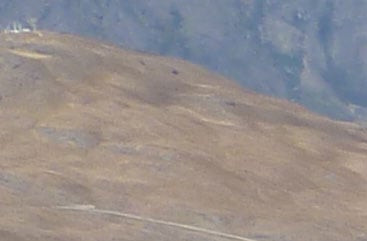 | 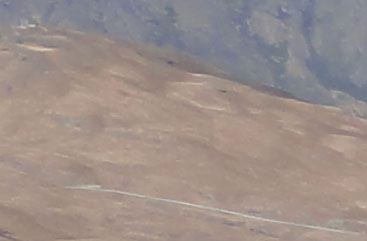 | |
f5, 80 ISO |
f9, 125 ISO | |
 |  | |
f5, 80 ISO |
f9, 125 ISO | |
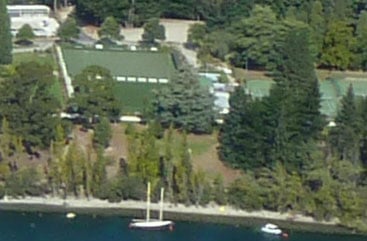 | 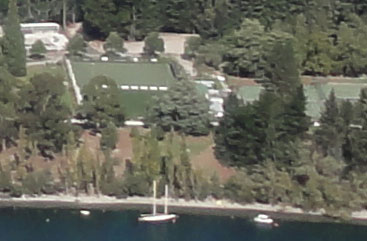 | |
f5, 80 ISO |
f9, 125 ISO | |
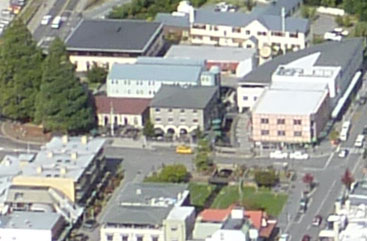 | 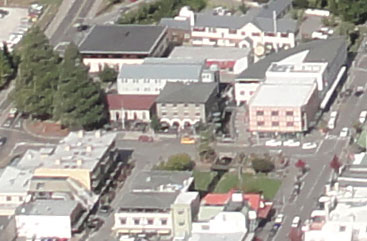 | |
f5, 80 ISO |
f9, 125 ISO |
Panasonic Lumix DMC-TZ10 / ZS7 Real-life sharpness when zoomed-out (Aperture Priority)
Panasonic Lumix DMC-TZ10 / ZS7 results : Real-life resolution / Sharpness wide-angle / Sharpness telephoto / High ISO Noise
Panasonic Lumix DMC-TZ10 / ZS7 results : Real-life resolution / Sharpness wide-angle / Sharpness telephoto / High ISO Noise
|
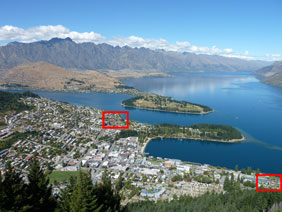 |
To compare real-life performance when zoomed-out, we shot this scene with the Panasonic Lumix DMC-TZ10 / ZS7 in Aperture Priority mode at all f-numbers. As before, the Lumix TZ10 / ZS7 was set to its lowest sensitivity and best-quality JPEG settings. The crops below are taken from the areas marked with the red rectangles and presented here at 100%. Note this image was shot on a different day to our first results page. |
Below you’ll see crops taken from the corner and centre portions of images shot with the lens zoomed-out at a variety of aperture settings, and you may be surprised by the results. DSLR owners are accustomed to closing their lens apertures down by a few stops to achieve a sweetspot in sharpness, but compact owners have to be much more careful. Due to their much smaller sensors and actual focal lengths, the sweetspot may in fact be with the aperture at (or close to) its widest opening, with smaller values quickly succumbing to the softening effect of diffraction.
You can see this clearly below, where the results become significantly softer beyond f4. Indeed the best result in terms of contrast and sharpness in the centre is arguably when the aperture is wide-open at f3.3. That said, with the aperture wide-open, there’s a little optical softness in the extreme corners, which can be improved slightly at f4. The choice between f3.3 and f4 for ultimate quality when zoomed-out is a subtle one, but most will judge them both far superior to the smaller aperture values.
Unfortunately the TZ10 / ZS7, like many compacts, chooses its aperture in the automatic modes based on a strict line which doesn’t always take diffraction into consideration. One look at our Sample Images Gallery and you’ll see the camera regularly selecting f5.6 or even smaller under bright conditions, when the same exposure with sharper results could be achieved with a larger aperture and quicker shutter speed. The camera only seems to select larger apertures under dim conditions – or of course when you tell it to.
One of the major benefits of the TZ10 / ZS7 over its predecessor is the presence of Aperture and Shutter Priority, along with full Manual, allowing you to select exactly the aperture you’re after. So if you’re after the best image quality from the TZ10 / ZS7 when zoomed-out, set it to Aperture Priority and choose one of the smaller f-numbers to open the aperture and avoid diffraction. The depth-of-field may be reduced as a result, but since this is already so high with a typical compact you’re unlikely to suffer from many out-of-focus areas.
Now let’s see if the same approach works for the TZ10 / ZS7 when it’s fully zoomed-in to its maximum focal length. Alternatively skip straight to our High ISO Noise results, or our Verdict.
Panasonic Lumix DMC-TZ10 / ZS7 Corner sharpness at 25mm equivalent |
Panasonic Lumix DMC-TZ10 / ZS7 Centre sharpness at 25mm equivalent | |
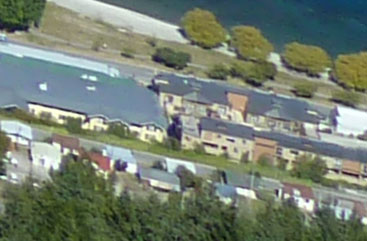 | 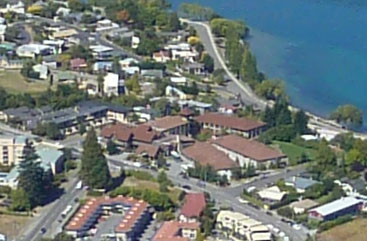 | |
f3.3, 80 ISO |
f3.3, 80 ISO | |
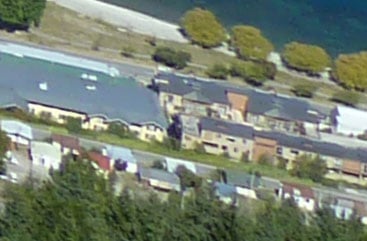 | 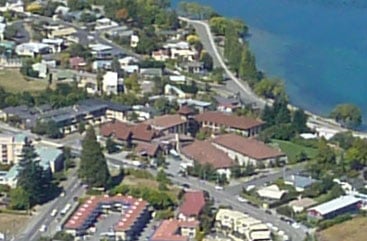 | |
f4, 80 ISO |
f4, 80 ISO | |
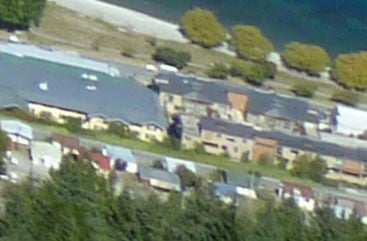 | 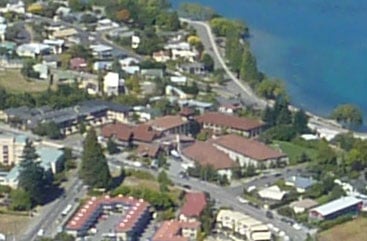 | |
f5.6, 80 ISO |
f5.6, 80 ISO | |
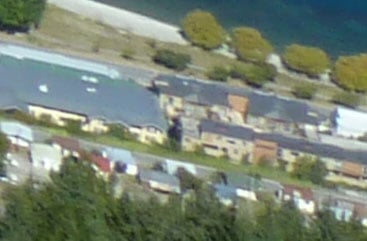 | 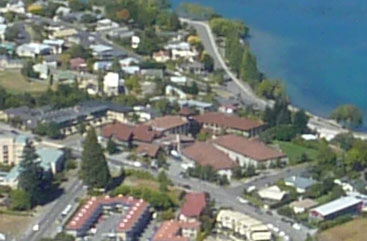 | |
f6.3, 80 ISO |
f6.3, 80 ISO |
Panasonic Lumix DMC-TZ10 / ZS7 Real-life sharpness when zoomed-in (Aperture Priority)
Panasonic Lumix DMC-TZ10 / ZS7 results : Real-life resolution / Sharpness wide-angle / Sharpness telephoto / High ISO Noise
Panasonic Lumix DMC-TZ10 / ZS7 results : Real-life resolution / Sharpness wide-angle / Sharpness telephoto / High ISO Noise
|
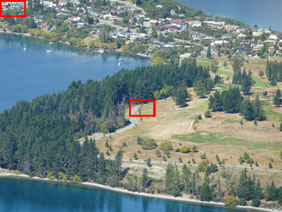 |
To compare real-life performance when zoomed-in, we shot this scene with the Panasonic Lumix DMC-TZ10 / ZS7 in Aperture Priority mode at all f-numbers. As before, the Lumix TZ10 / ZS7 was set to its lowest sensitivity and best-quality JPEG settings. The crops below are taken from the areas marked with the red rectangles and presented here at 100%. Note this image was shot on a different day to our first results page. |
Below you’ll see crops taken from the corner and centre portions of images shot with the lens fully zoomed-in at a variety of aperture settings. On the previous page we saw how the aperture setting made a big impact on the overall contrast and sharpness of the images when the camera was fully zoomed-out, but here at the maximum focal length, there’s much less difference between them.
Indeed while the last row at the smallest aperture setting of f6.3 is arguably a tad worse than the ones above it, the three rows look essentially the same. The reason for this is the lens on the TZ10 / ZS7, along with most other super-zooms, becomes softer and less contrasty at its longer focal lengths. This reduction in contrast and sharpness when fully zoomed-in has effectively overshadowed any effect of diffraction at smaller apertures. You can really see this by glancing back at our previous two pages where the photos were taken at the wide-end of the focal range.
In one respect, this is good news, since you won’t need to worry about manually selecting larger apertures when zoomed-in for the best results, unless of course you want to minimise the depth-of-field for an out-of-focus effect. But it does sadly illustrate the noticeable softening of images from super-zooms at their longest focal lengths – this is one of the prices you pay for having such a long zoom-range, especially in a compact body.
Now it’s time to see how the camera performs throughout its sensitivity range in our Panasonic Lumix TZ10 / ZS7 High ISO Noise results. Alternatively if you’ve already seen enough, head straight to our Verdict!
Panasonic Lumix DMC-TZ10 / ZS7 Corner sharpness at 300mm equivalent |
Panasonic Lumix DMC-TZ10 / ZS7 Centre sharpness at 300mm equivalent | |
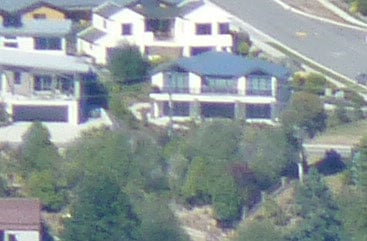 | 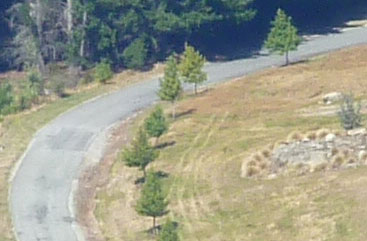 | |
f4.9, 80 ISO |
f4.9, 80 ISO | |
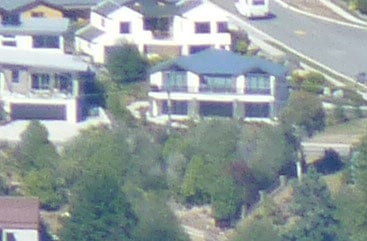 | 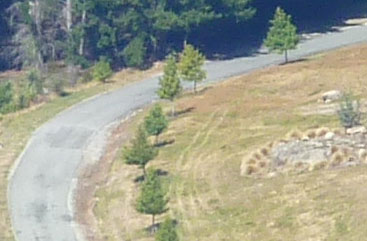 | |
f5.6, 80 ISO |
f5.6, 80 ISO | |
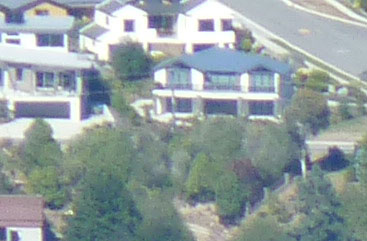 | 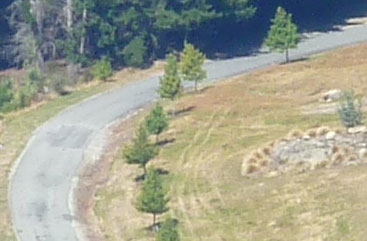 | |
f6.3, 80 ISO |
f6.3, 80 ISO |
Panasonic Lumix DMC-TZ10 / ZS7 vs Sony Cyber-shot DSC-HX5 High ISO Noise (default auto settings)
Panasonic Lumix DMC-TZ10 / ZS7 results : Real-life resolution / Sharpness wide-angle / Sharpness telephoto / High ISO Noise
Panasonic Lumix DMC-TZ10 / ZS7 results : Real-life resolution / Sharpness wide-angle / Sharpness telephoto / High ISO Noise
|
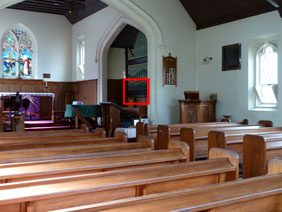 | To compare noise levels under real-life conditions we shot this scene with the Panasonic Lumix DMC-TZ10 / ZS7 and Sony Cyber-shot DSC-HX5 within a few moments of each other using their best-quality JPEG settings and at each of their ISO settings. The lenses on each camera were adjusted to deliver the same field-of-view; the Sony crops are larger due to its lower resolution. Each camera was set to Program mode without intervention to see how they performed with default settings. |
The image above was taken with the Panasonic Lumix DMC-TZ10 / ZS7 in Program mode at 80 ISO with an exposure of 0.62 seconds and the lens set to 7mm f3.7; the original file measured 3.65MB. The crops below are taken from the area marked with the red rectangle and presented here at 100%.
The TZ10 / ZS7 kicks-off this sequence at 80 ISO where it delivers a pretty clean and detailed result. Pixel peepers may notice a handful of speckles typical of Panasonic’s compact images even at their lowest sensitivities, but most would be happy with the results at this point.
Below this we have the TZ10 / ZS7 at 100 ISO and the Sony Cyber-shot DSC-HX5 joining-in at its lowest sensitivity of 125 ISO. As we saw on our first results page, each camera takes a different approach to image processing with its default settings. The TZ10 / ZS7 is delivering punchier output by default with most of its settings ‘turned-up’ compared to the Sony. Here the contrast, sharpness and saturation are all higher, with the Sony looking a little subdued in comparison. Set the Panasonic to Intelligent Auto and it can become even punchier still, although if you prefer a more laid-back approach you can also tweak the settings to suit.
In terms of noise, the Sony appears cleaner at this point, but we believe this is more down to smoothening from its image processing than superior sensitivity.
At 200 ISO, the noise textures from the Panasonic have become more noticeable and you can see further examples in our Sample Images Gallery. This texture along with edges becoming less well-defined is a result we’ve seen from other Panasonic compacts. To be fair though, the Sony is also exhibiting familiar behaviour from earlier models, where in an attempt to eliminate any visible textures, the noise reduction inevitably smears-out fine details. The Panasonic does however allow you to adjust its noise reduction settings if desired.
With the sensitivity increased to 400 ISO, noise textures have become even more visible on the Panasonic images when viewed at 100%, although there’s still some good detail remaining. Once again the Sony manages to avoid the same textures, but only by applying ever-increasing noise reduction. The image looks smooth as a consequence, but how much detail is being lost? That said, 400 ISO on either camera is about as high as you’d want to go for the best results. Beyond here both begin to suffer.
At 800 ISO there’s a big drop in quality from both cameras, with a hike in noise and processing on the Panasonic, and an image which is slowly turning to mush on the Sony. At 1600 ISO, things really take a turn for the worse, with both cameras suffering from a drop in detail and the Panasonic colour shifting quite noticeably. These higher sensitivities really are for small reproductions or emergency-use only.
That’s as far as the TZ10 / ZS7 will go at its maximum resolution, but the TZ10 /ZS7 does offer a High Sensitivity scene preset which operates between 1600 and 6400 ISO, albeit at a greatly reduced resolution of 3 Megapixels. Here it’s automatically selected 3200 ISO, and despite the significant drop in resolution, it’s arguably better-looking than the 1600 ISO sample.
In the meantime, the Sony HX5 bravely offers 3200 ISO at its full 10 Megapixel resolution, although by this point, any fine detail has long since departed and you’re left with an image packed with noise.
So once again, the best results from both cameras are below 400 ISO, and any choice between them is really down to personal preferences on image processing. Personally speaking we felt the Sony was a little heavy-handed with its noise reduction, leaving the Panasonic with an edge in detail at lower sensitivities. This coupled with greater control over image processing, including noise reduction, made the TZ10 / ZS7 slightly preferable overall, but again it’s far from a difference of night and day.
Head on over to our Sample Images Gallery for more examples across its sensitivity range, or if you’ve seen enough, head straight over to our verdict!
Panasonic Lumix DMC-TZ10 / ZS7 |
Sony Cyber-shot DSC-HX5 | |
 |  | |
80 ISO |
Below 125 ISO not available | |
 |  | |
100 ISO |
125 ISO | |
 |  | |
200 ISO |
200 ISO | |
 |  | |
400 ISO |
400 ISO | |
 |  | |
800 ISO |
800 ISO | |
 |  | |
1600 ISO |
1600 ISO | |
 |  | |
High Sensitivity preset (here at 3200 ISO) |
3200 ISO |







